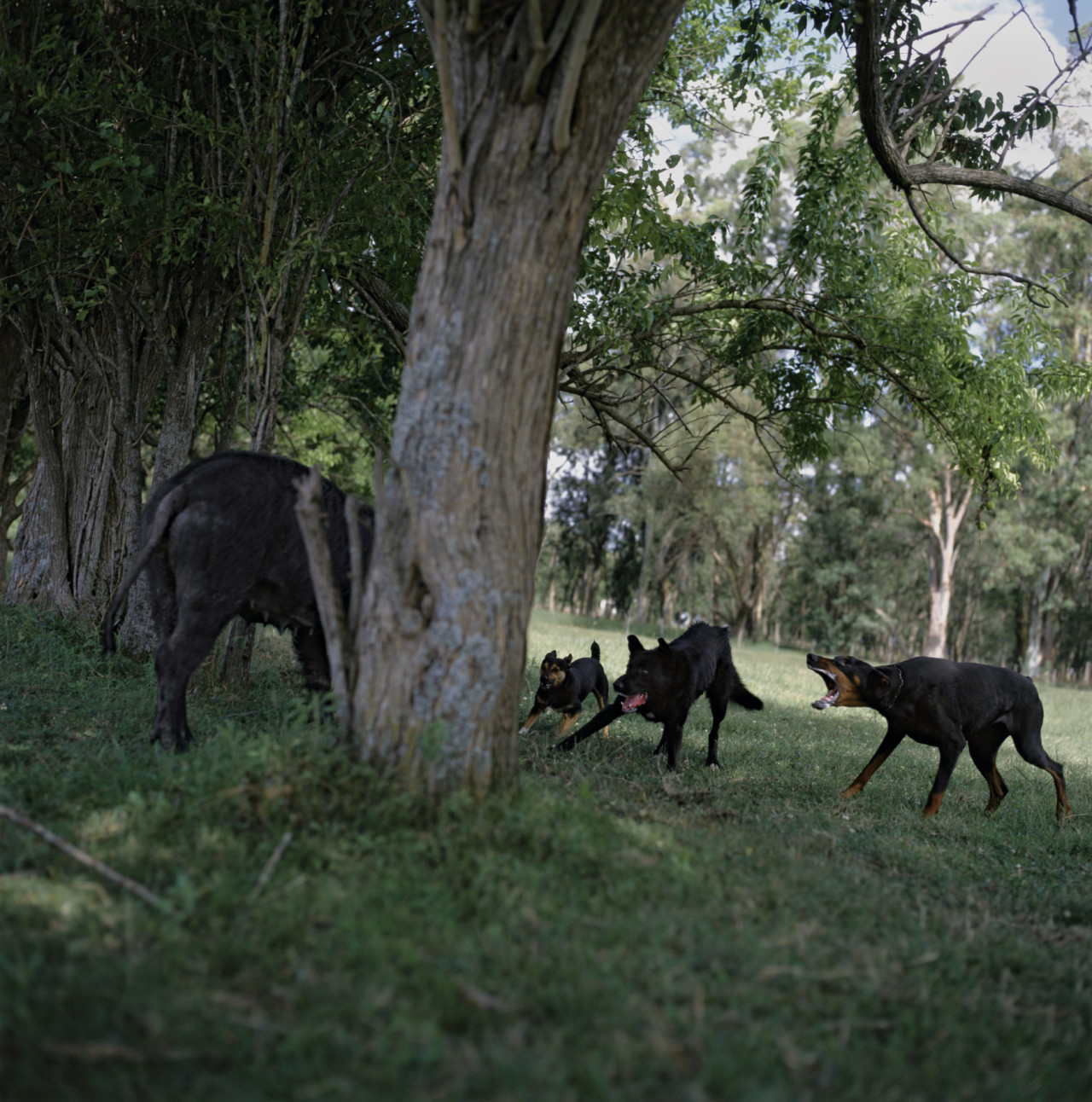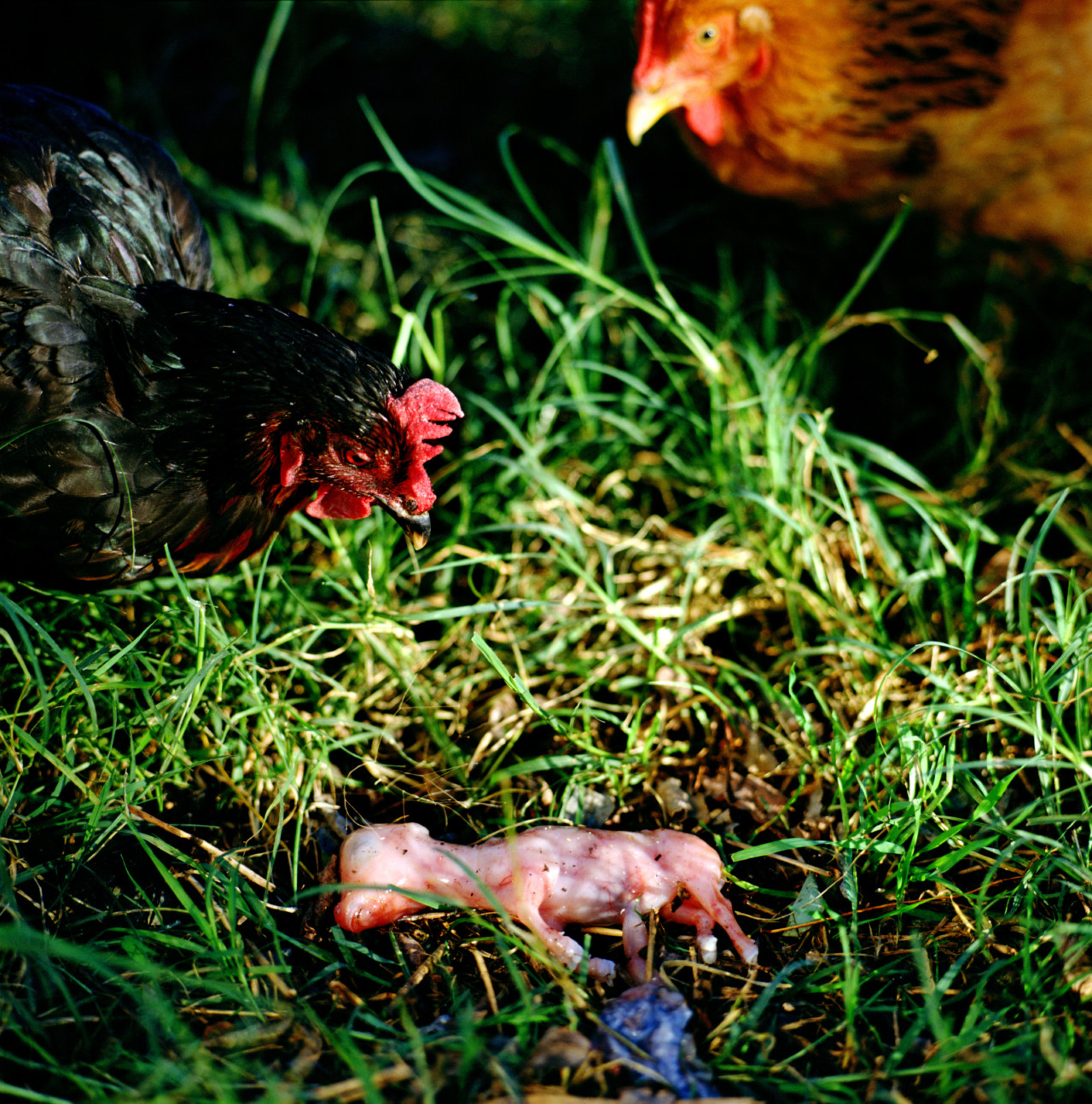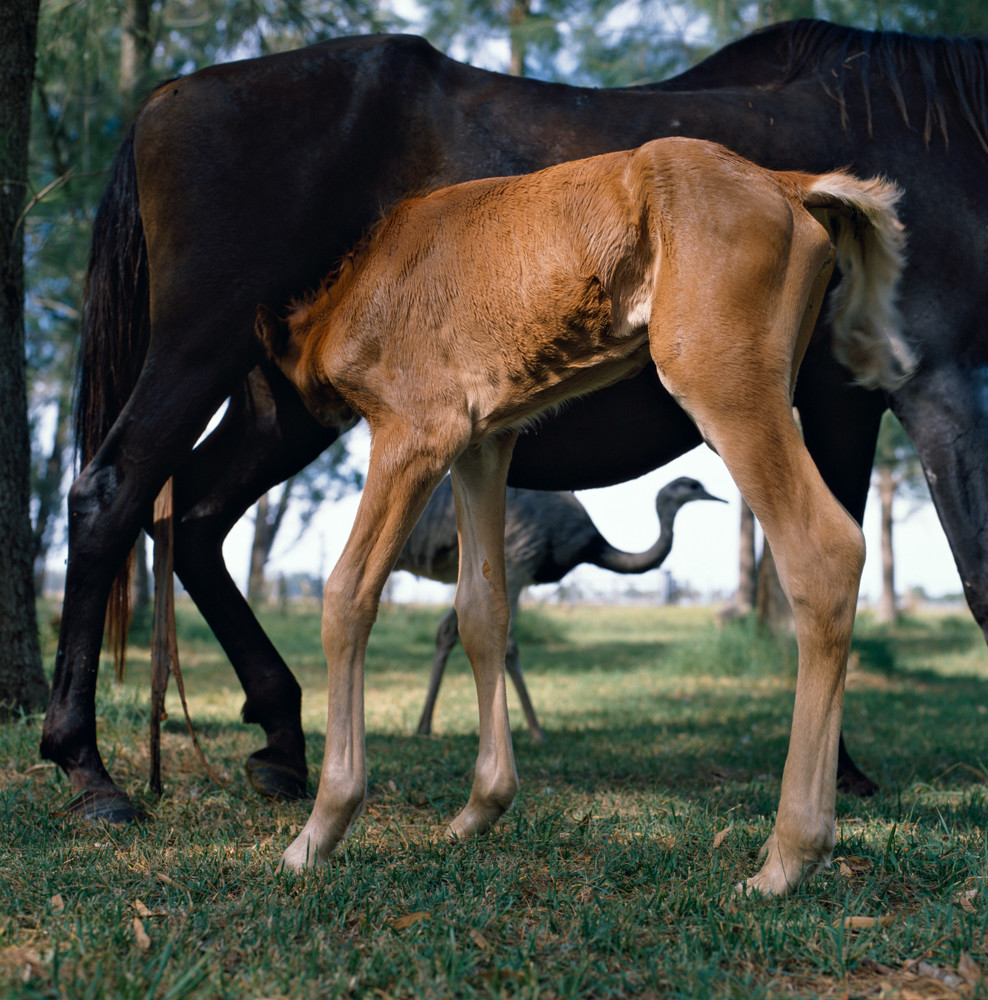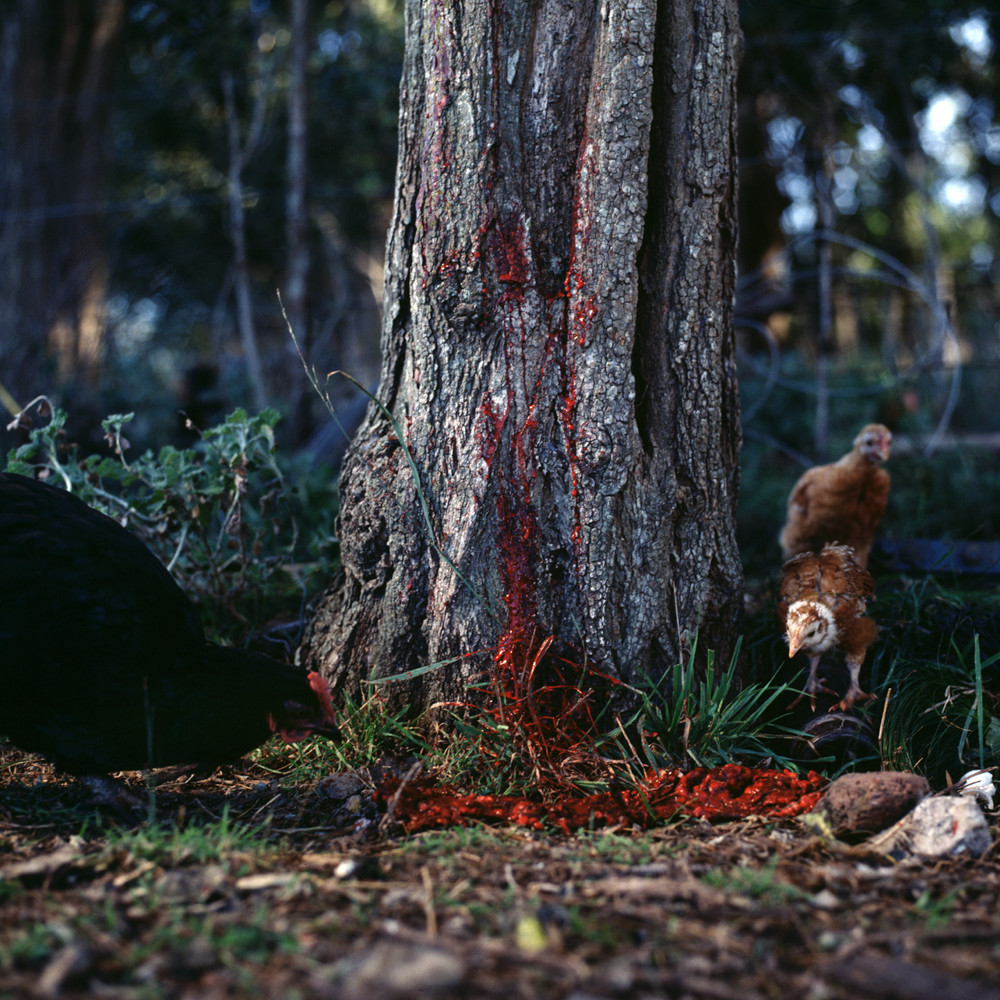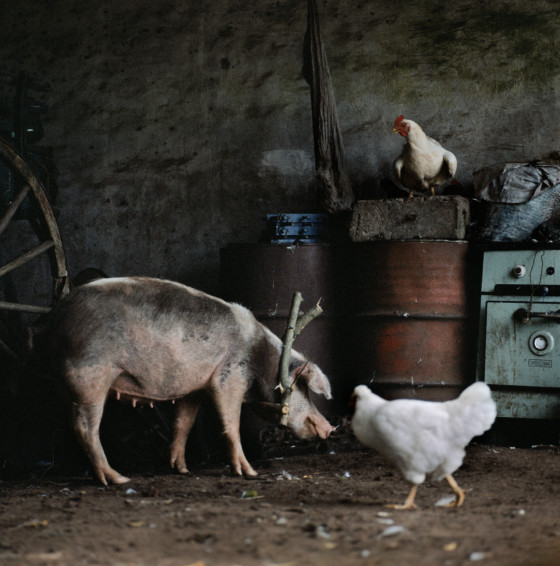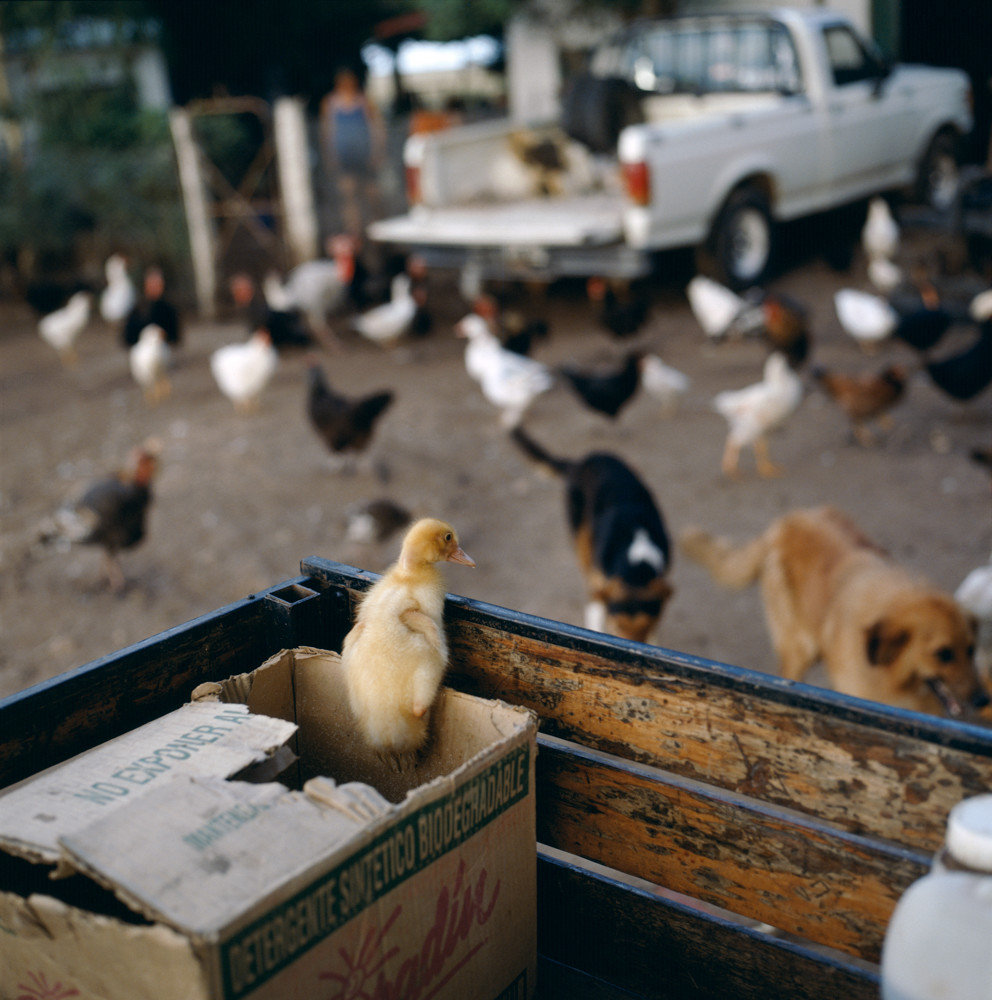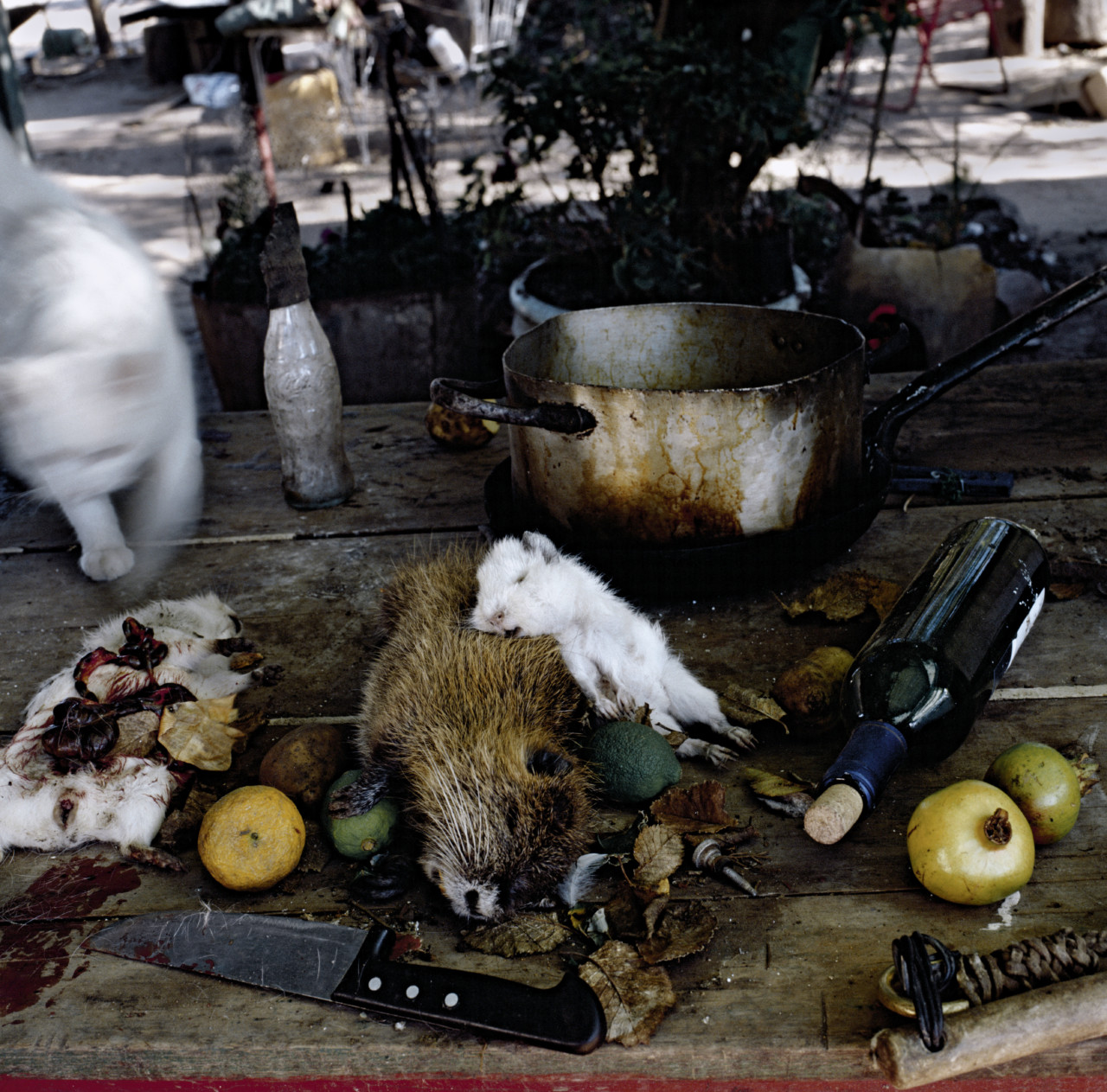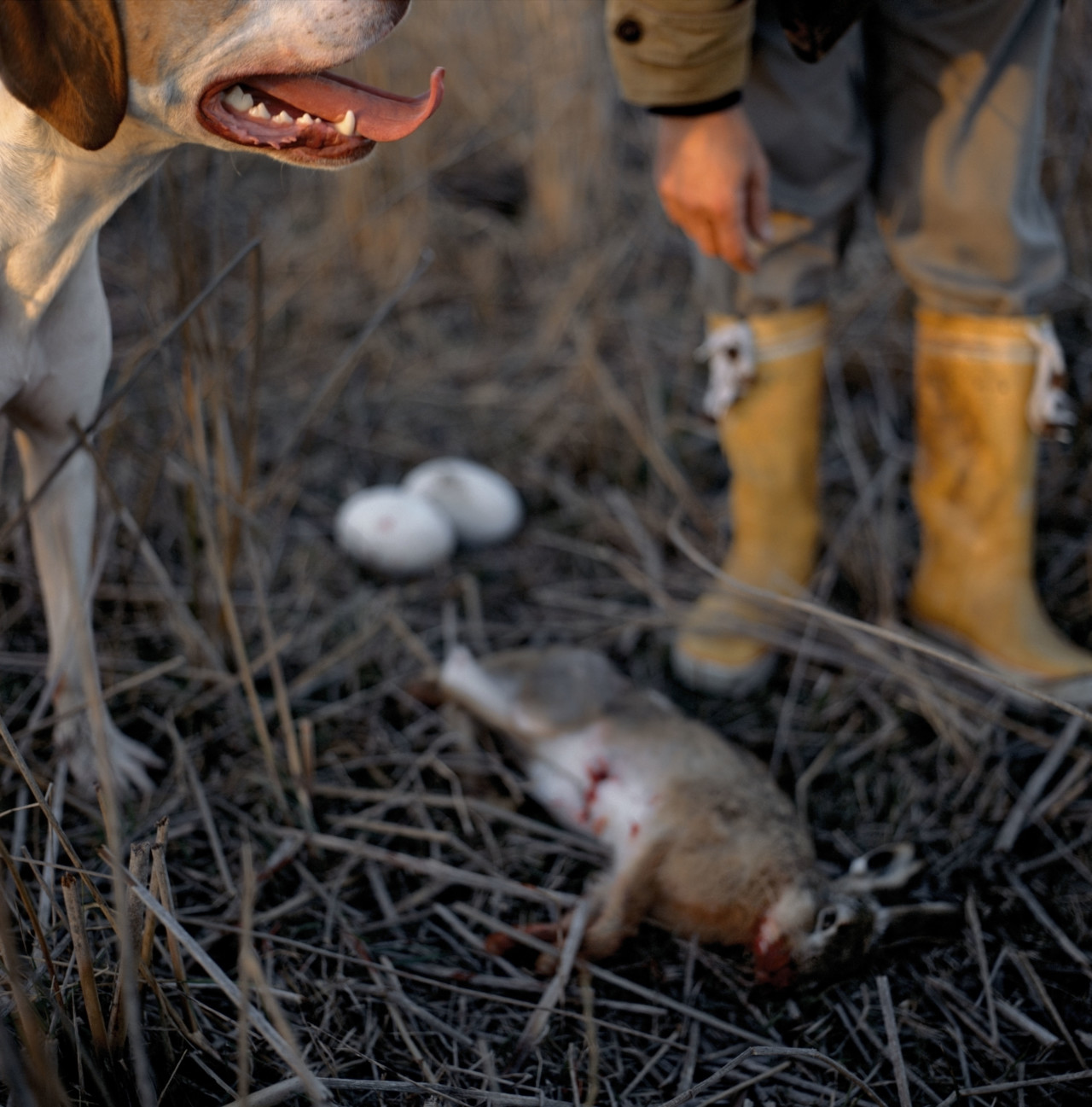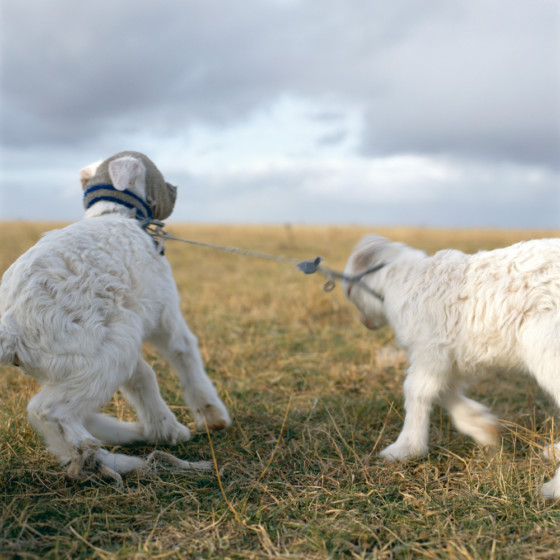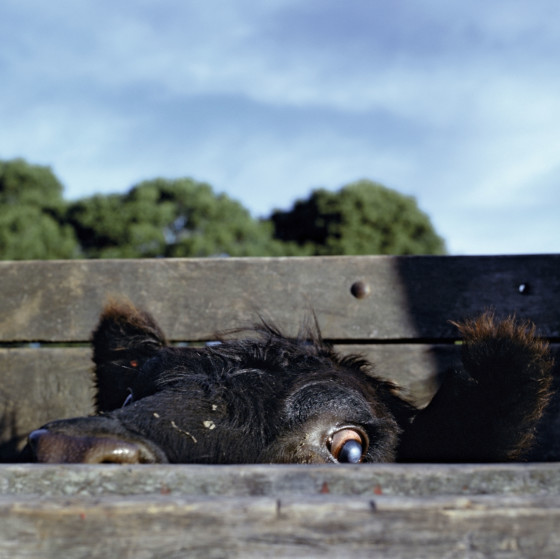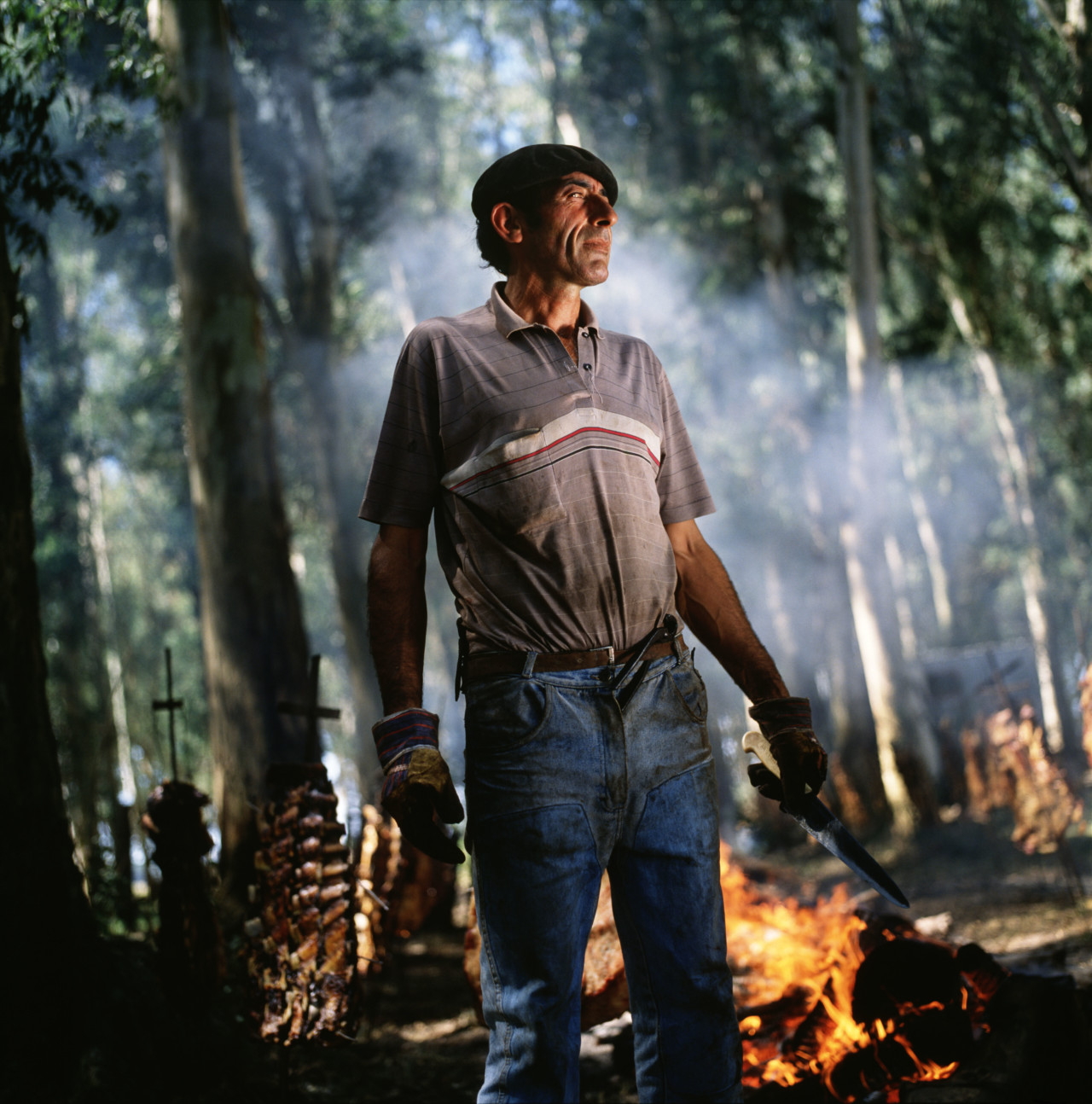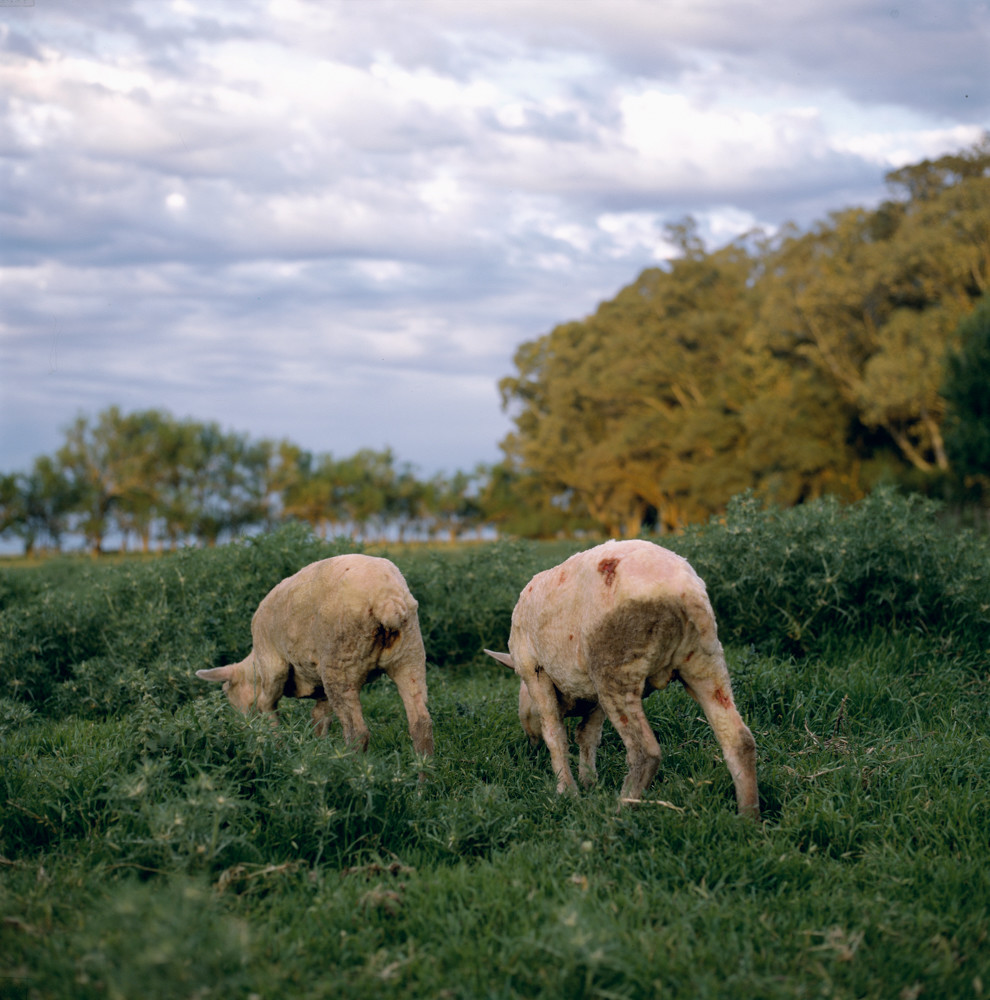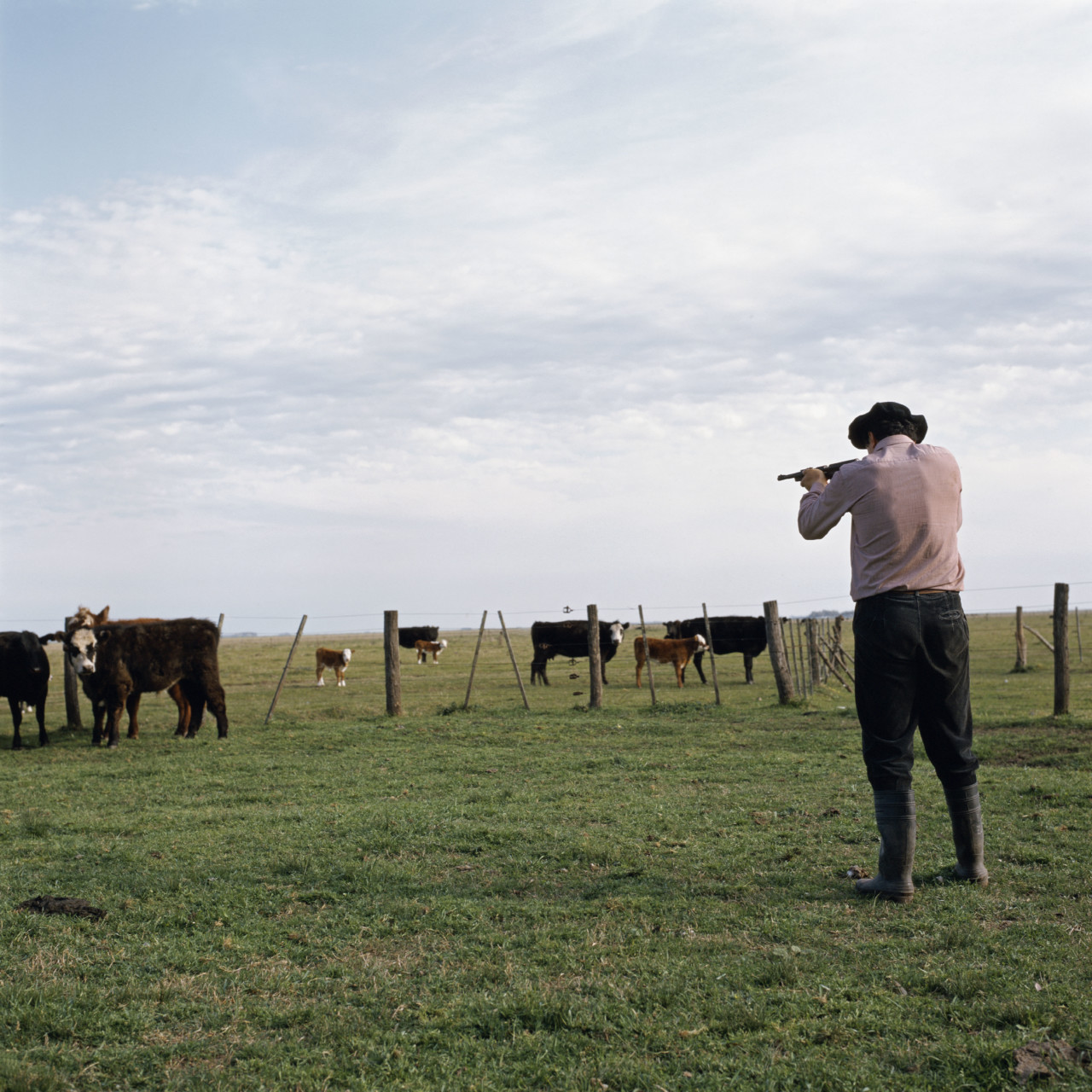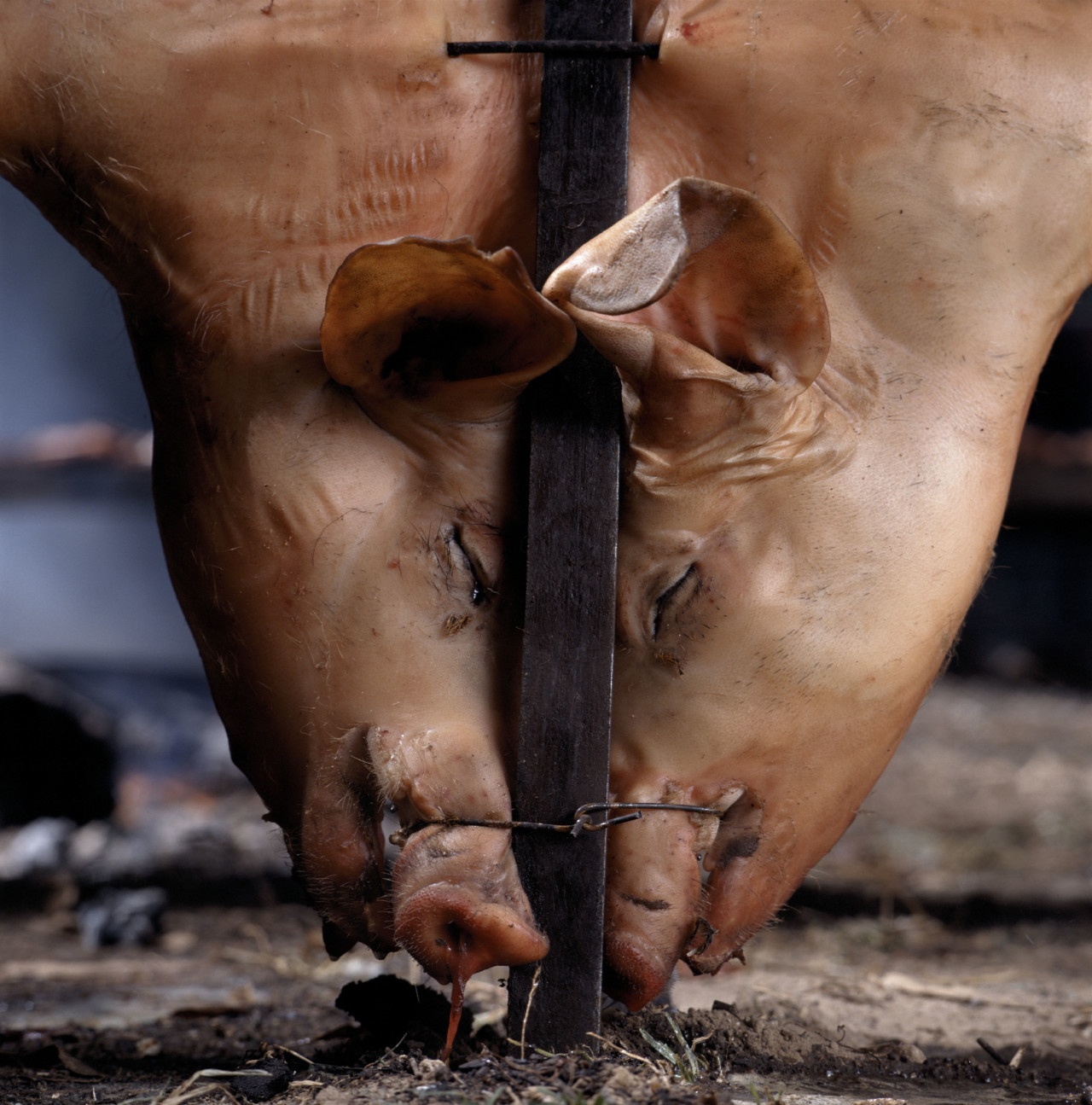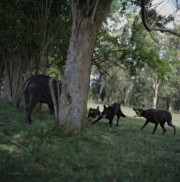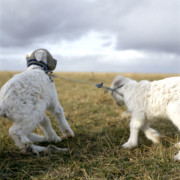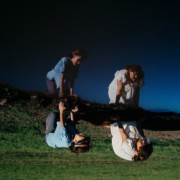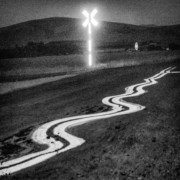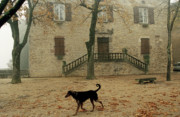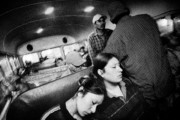On the Sixth Day: Alessandra Sanguinetti’s Portrait of Life and Death in Agricultural Argentina
Rebecca Bengal speaks with the photographer about the book project, which explores the experiences of farm animals as well as the dualism of our interactions with them
At dusk, a pack of dogs snarls at a pig. Chickens regard the lifeless fetus of a calf. A wild ostrich strolls nonchalantly by, visible underneath the body of a mare nursing its foal. The blur of a cat prowling just-butchered carcasses on a table interrupts a still life of lime and pomegranate and wine bottle. Looking out over the bed of the pickup that delivered it here, a brand-new arrival, a duckling covered in yellow fuzz pops up out of a cardboard box, apprehensively regarding its new home, the approaching chickens and beasts, the sweep of life rushing over the dirt towards the truck.
“It was about paying attention to everyday animals, and the relationships they have with each other. I was imagining myself in their place, looking at them as if I was one of them,” says the photographer of these pictures, whose vantage point avoids the sentimentality we tend to adopt around animals when they are not on our plate. In them her camera finds the heart of the violence and the sheer range of vivid experience in the intimate worlds of farm animals. Like creation stories, in which time collapses the entire arc of life, the sequence of photographs that make up Alessandra Sanguinetti’s project, On the Sixth Day, seem to simultaneously inhabit a single day, and a lifetime. The project and the 2005 Nazraeli Press book of the same name borrow a biblical title, but there’s no actual religion embedded here. The subject is the essential holiness of acknowledging the lives and deaths of these creatures, magnifying their doings, witnessing their losses and passing.
"I unfolded it in a fable-like manner emulating the stories I grew up on in order to make the familiar and ordinary, extraordinary"
- Alessandra Sanguinetti
As a child growing up in Buenos Aires, Sanguinetti made an altar for her stuffed animals. “I mixed up my mother’s perfumes and put them in a little airplane whiskey bottle and I would grab the animals and pray to an animal god I had made up.” On weekends and summers her family went to the pampas, the endless agricultural lowlands outside the city. When she was seven, her father bought a farm for raising cattle, situated near other, centuries-old farms where wild ostriches roamed alongside goats and sheep and horses — agricultural worlds that captured her imagination.
In her child’s eye, the tiny dramas of the farms — her father’s, and neighboring, generations-old ones — loomed enormous. “When the sheep were rounded up every week for food, I would know one of them would be killed, and I would viscerally feel like I was one of them,” she says.
Sanguinetti was in her twenties when she enrolled at the International Center of Photography. These childhood images of animals began returning to her as ideas for photographs, in a much-mythologized and respected territory — the campo, the country. “It’s such a part of Argentinian identity,” she says. The photos that existed of the place failed to match what it meant to her. Photographers tended to render the flat horizon of the pampas in a melancholic black and white, pictures emphasizing qualities of “emptiness and desolation,” Sanguinetti says. “On the other side of that was the cliché of the sunset and the gaucho galloping through the water”. This was a place full of life and untold stories.
“I’d think of the countryside — blue, green, red, brown,” she says. “That’s all the colors there are in the pampas, really: the blood, the sky, the grass, and the dirt.” In the pictures she would make, the palette of primary colors and earth is rich, ravishing and even a bit lurid and fabulistic, echoing the fairy tales she devoured as a child — Hans Christian Andersen, the Brothers Grimm, the story of The Devil’s Golden Hair. “I unfolded it in a fable-like manner emulating the stories I grew up on in order to make the familiar and ordinary, extraordinary.”
Joel Sternfeld was an early influence. So was Nan Goldin, whose use of color in The Ballad of Sexual Dependency is similar to Sanguinetti’s striking palette in the project. The sense of the photographer’s enmeshment in the world of the pictures — whether the farm in Argentina, or a bedroom in downtown New York City or Provincetown, Massachusetts — is palpable. In both Goldin and Sanguinetti’s images, you could write a soap opera of the little dramas unfolding in the center and at the edges of the frame. The sequencing of the book plays out as if all the events could have occurred in a day.
"I can’t photograph something I really don’t love or am not curious about..."
- Alessandra Sanguinetti
There were stories everywhere, but often they disappeared into the swirl of daily life on the farm. “A chick escaping over the fence, or a mother separated from her calf,” she says. “All these extraordinary and dramatic things were happening and no one seemed to acknowledge the enormity of the moment.”
The most intensive period in making this work came in the late 1990s, but the photographs in On the Sixth Day span a stretch from 1996 to 2004. Sanguinetti was working during that time as a photo editor at a newspaper with a generous supply of film and a supportive boss. Every Friday, she’d raid the film refrigerator and head into the country. Most of the project was made at a neighboring farm, where Sanguinetti fell back into the rhythm of childhood. In high school she’d sometimes sit on the ground, making photos with a 35mm camera; now she did the same with her Hasselblad. “One of my favorite things to do is just sit in a field,” she says, “and wait for the cows to notice me and come over. They’re very curious. I would take pictures of them while lying down on the grass. I just started getting on my knees instinctively.”
Like Barbara Gowdy’s 1999 novel White Bone, a deeply affecting and fully realized epic told entirely through the perspective of elephants, Sanguinetti depicts the emotional lives of the animals who regard the deaths of their fallen comrades with seeming empathy, or sometimes coldness, or sometimes with apparent recognition of their own mortality. Whether or not any of this is possible or real is beside the point. The photographs entreat the human viewer to participate as simply a fellow animal.
This is partly achieved through a deliberate resizing. Like William Eggleston’s famous 1969 photograph of a tricycle, viewed so that it seems the same size as the sedan parked in the background, her animals are scaled in equal importance to the humans in their midst. A duck noses at the worn feet of the farmer, Juana, whose leg bears a bloody gash from some working accident, whose canvas slippers sink into the mud. “I only included people when it had to with the animals’ point of view,” she says. “I wasn’t trying to show people’s complexity or a human point of view. I saw them as other creatures interacting with animals.”
Sanguinetti was struck by Isaac Bashevic Singer’s 1962 novel, The Slave, whose titular character Jacob is a cowherd in a seventeenth-century mountain village in Poland where he falls in love with his master’s daughter. A devout vegetarian, Jacob contemplates his relationship with the animals he is charged with tending. “He silently blamed the Creator for forcing one creature to annihilate another. Of all the questions he asked himself about the universe he found this one the most difficult,” Singer wrote.
"A story never really ends but the telling of it does"
- Alessandra Sanguinetti
Sanguinetti began spending long days and hours at Juana’s farm, following her around as she worked. “I began to see how she embodied the dualism in our relationship to animals. Little by little, the essential contradiction of caring for animals that you would later kill began to disappear. On occasion she felt guilty if an animal was killed and she didn’t take a photograph. “Taking a photograph has always been about paying attention, and that inherently involves some kind of respect because you are taking the time to understand it. I can’t photograph something I really don’t love or am not curious about or don’t respect in some way.”
Here are the deaths of other animals encountering the deaths of others. Looking at these pictures you sense that they might even possess an awareness of their own mortality, beyond the instinctual. They bear witness. So much of these pictures is about bearing witness.
Meanwhile another, human story began to intrude, in the form of Juana’s nine-year-old granddaughters, cousins Guillermina and Belinda, who were the youngest persons on the farm and therefore unencumbered by farm duties, instead being free to play and dream as Sanguinetti once had. The photographer’s attention began to drift away from the reality of the farm and into the imaginative world of the girls. This transition marked the formative days of what would become her next project, The Adventures of Guille and Belinda and the Enigmatic Meaning of Their Dreams.
But the creatures of On the Sixth Day never left her. Three autumns ago, when Sanguinetti and I met in North Dakota to collaborate on a story on the Standing Rock Sioux-led resistance against the Dakota Access Pipeline, we spent the first day following a horse ride meant to commemorate the planned route of the pipeline. The night before, one of the animals had been grievously injured — a teenage water protector had taken it out without permission and somehow it had become hurt. I watched Sanguinetti approach the horse, sequestered in a makeshift corral for rehabilitation, and its caretaker, thinking of On the Sixth Day. It has never left her. She moved around the animal and the stack of hay beside it, looking intently, gently. When the horse lay down briefly in pain, she dropped to the grass, too.
First published in 2005, a new, expanded edition of On the Sixth Day is now available to preorder from the Magnum Shop, including additional unseen images. Signed editions of the book are available here.


